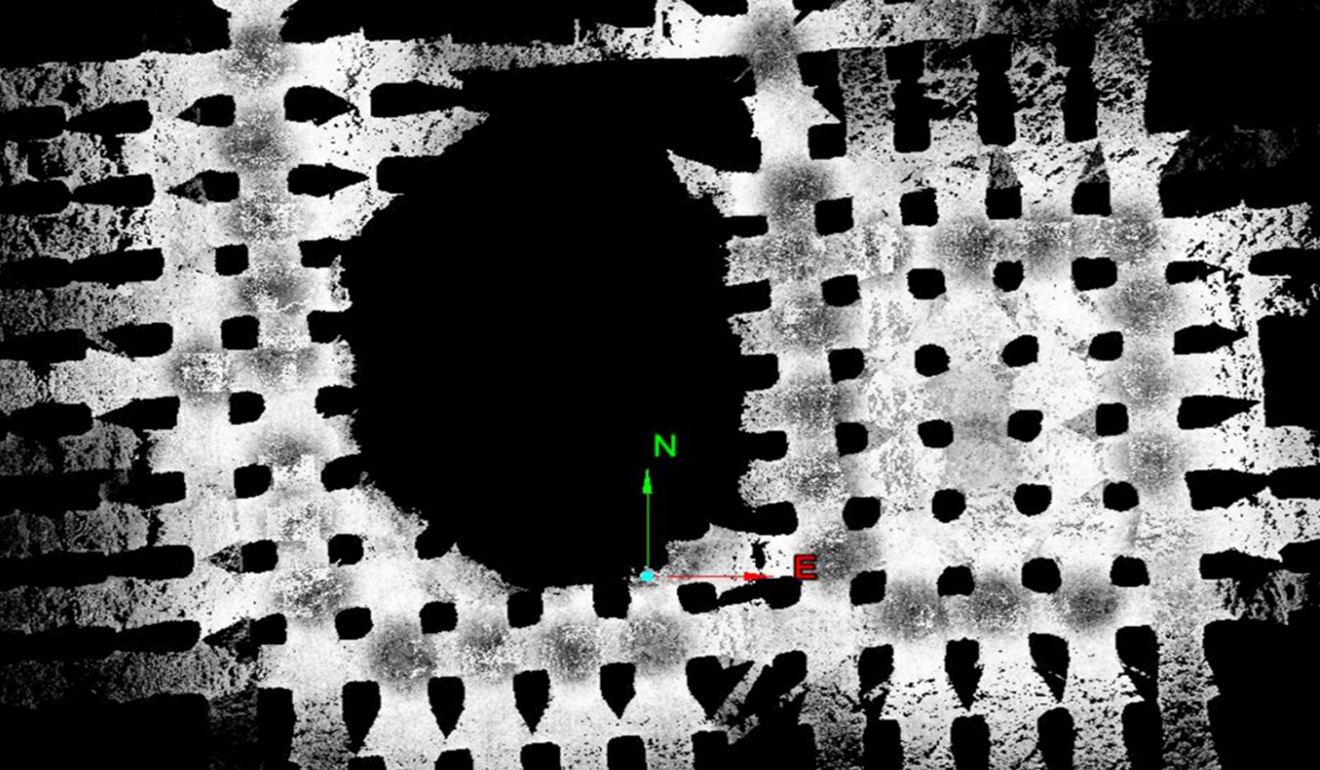Mining Project: Methods to Reduce Potential for Massive Ground Collapses in Underground Stone Mines
| Principal Investigator |
|
|---|---|
| Start Date | 10/1/2021 |
| Objective |
This project will provide the industry with an understanding of current engineering controls and developing new ideas to further reduce the health and safety hazard associated with massive ground collapses. |
| Topic Areas |
Research Summary

3D LiDAR scans of a massive ground collapse
Several massive ground collapses in underground stone mines have occurred in the past decade, with four occurring from 2020 to 2021. These massive ground collapses represent a major hazard that can result in traumatic injuries and fatalities with the potential for multiple-fatality events. They typically occur unexpectedly and are endangering the health and safety of underground stone miners. Improved engineering interventions are needed to lessen the potential for unexpected massive ground collapses.
Progress and the conclusions of this research will be communicated directly to federal and state agencies, mine operators, organized labor, and consultants, and indirectly to safety professionals, academia, and professional societies. Conclusions will be communicated through meetings, briefing reports, technical papers, and peer-reviewed articles, and practical recommendations and ideas will be shared at the Annual Underground Stone Safety Seminar—which primarily focuses on mine operators and has participation from roughly 80% of the targeted stakeholders. Workshops, meetings, and forums will be organized for information and technology transfer to industry and regulatory bodies.
By communicating these conclusions, the goal of reducing mine workers’ risk of traumatic injuries and fatalities and the goal of reducing the risk of mine disasters and improving post-disaster survivability of mine workers will be addressed. Success will be measured by tracking the adoption of mine design recommendations to prevent massive ground collapses in new mine development. This work will help to fill a current void, and if successful, may assist in promoting additional proactive responses from this sector of the mining industry by providing the industry with an understanding of current engineering controls and developing new ideas to further reduce the health and safety hazard of massive collapses.
This research will use a combination of field studies, instrumentation sites, numerical modeling, laboratory tests, and data analysis to address the project research aims, which are to characterize the factors responsible for massive ground collapses in underground stone mines and to determine the leading practices used to mitigate the potential for massive ground collapses. The field studies will be conducted at multiple underground stone mines, primarily at local operations in Pennsylvania and Ohio, and will include detailed surveys of pillar dimensions, spans, bolting patterns, blasting techniques, geologic conditions and anomalies, and stress direction and effects. Both Geographic Information System (GIS) and point cloud software programs will be used to store and analyze data obtained from field visits.
Detailed 3D LiDAR scanning will be utilized to accurately determine pillar dimensions, geologic anomalies, and change detection. Numerical models will be used to further investigate parameters controlling massive roof and pillar collapses in underground stone mines.
All of these tasks may involve collaboration with federal and state agencies, especially through the Stone Mine Task Force, which includes experts in underground stone mining from this project, as well as experts from the Mine Safety and Health Administration and from the Pennsylvania Department of Environmental Protection Bureau of Mine Safety. Even though the project began in fiscal year 2022, researchers are already seeing trends in several of the recent massive ground collapse events that include pillars with planned dimensions outside the S-Pillar recommendations, pillars smaller than the planned dimensions, and collapses occurring in benched areas. Researchers will continue to explore these trends and explore other factors that may have contributed to the cause of these massive ground collapses.
- Calibration and Verification of Longwall Stress Models
- Coal Mine Safety Applications of Seismic Monitoring
- Developments in Sealant Support Systems for Ground Control
- Durable Support for Western U.S. Underground Metal Mines
- Ground Control Safety for Deep Vein Mines
- Ground Monitoring
- Roof and Rib Hazard Assessment for Underground Stone Mines
- Roof Monitoring in Limestone - Experience with the Roof Monitoring Safety System (RMSS)
- Roof Support
- Shotcrete Design and Installation Compliance Testing: Early Strength, Load Capacity,Toughness, Adhesion Strength, and Applied Quality